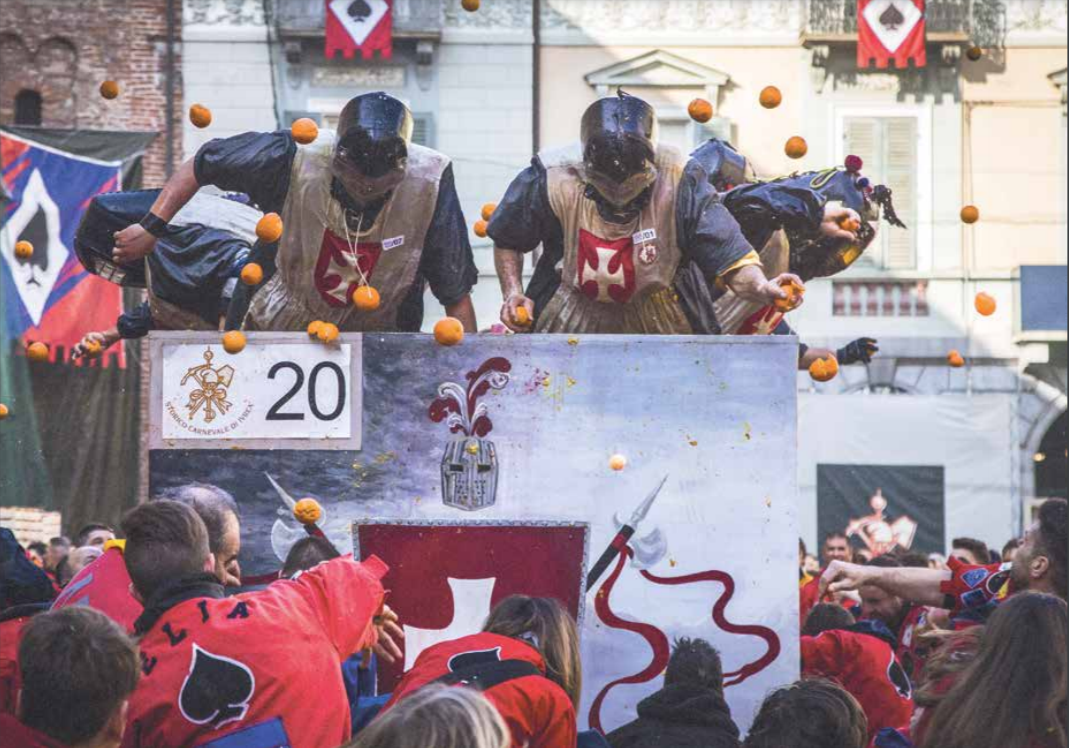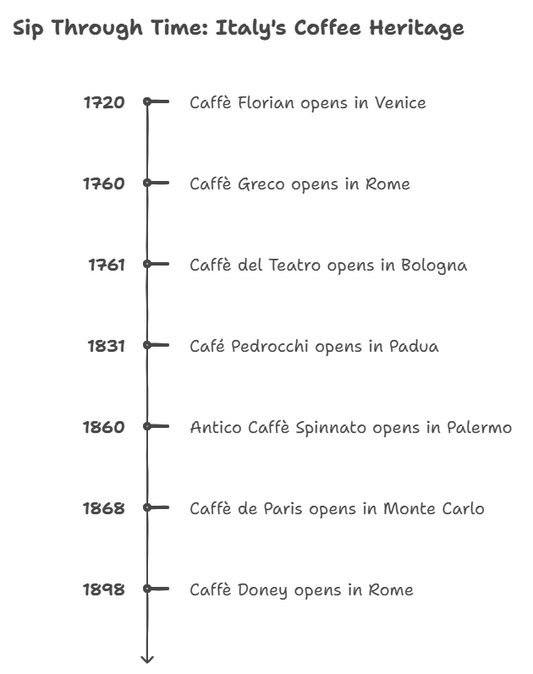Want to be part of a food fight of epic proportions?
Book yourself a ticket down to the town of Ivrea in north-western Italy.
What is the Battle of Oranges? The Battle of Oranges, Ivrea is one of the oldest festivals in Italy and the largest food fight in Italy. The Battle of Oranges recognized the valor of a young woman, Violetta, and how she freed an entire town from a baron.
The festival is celebrated at the end of the annual carnival that takes place in Ivrea and lasts three days, usually in February. Wearing a red cap will spare you from the food fight.

Origin of Battle of Oranges
Thought of as one of the oldest festivals in Italy, the Battle of Oranges finds its origins in the twelfth century. There was an egregious baron who not only made the lives of the people difficult but also imposed the law of ‘jus primae noctis’. Simply put, this refers to the so-called right of nobles in a locality to violate poor women who were betrothed, the night before their wedding.
The baron went around abducting young girls who were to be wed and sexually assaulting them. Countless women were victims of the baron’s tyranny until he chose to next abduct Violetta, the daughter of a miller.
Refusing to obey this appalling law, the formidable woman unsheathed a sword and beheaded the baron when he tried to lay hands on her. She then took his head and displayed it on a battlement in the town, which ignited the fire of rebellion in the people.
The whole town fought against the oppression brought about by the nobles and ended up destroying the castle. Eventually, they succeeded in establishing a free town. The Battle of Oranges is not just a food fight, it recognizes the valor of a young woman and how she freed an entire town.
Celebrations
The people of Ivrea pay homage to attain freedom each year during the Battle of Oranges.
- A married woman is selected to embody the role of Violetta and her identity is not made known to the rest of the people until she is presented at the balcony of the Town Hall.
- After she is revealed, she leads a procession twice along with the people playing the characters of the General and Guards.
- The first round is by foot and the second is on a golden carriage, where she gives the crowd sweets, flowers, and chocolates.
- She is dressed in white and wears the red berretto frigio (liberty cap).
- This cap must also be worn by citizens and tourists in Ivrea upon orders of the General.
- This red cap also serves as protection if one does not want to be hit by orange throwers; those who don the cap are spared.

Areas throughout Ivrea are allocated to groups of orange throwers who represent soldiers of the evil baron. They ride in horse-drawn carriages throughout the town, terrorizing the people by hitting them with oranges.
Nine teams of other orange throwers are also chosen, who are on the side of the people. These teams are on foot. They strike back at the throwers on the carriages and this is when things get chaotic. Oranges are everywhere, on the floor, stuck to walls, on lampposts, and as far as the eye can see.
The sight could be comparable to renaissance paintings at some point during the battle. As both teams do not hold back at all, the whole town of Ivrea is soon riddled with about as many oranges as there are grains of sand on the beach.
We are talking 700 tonnes of oranges just for this food fight. Imagine how many glasses of orange juice that would make!
People can take part in the celebrations by choosing to be in one of the nine teams on foot or the orange- throwers riding carriages. It is imperative, however, that the Cavallante (driver) is a talented horse trainer and a skilled driver of horse-drawn carriages. The Cavallante is accompanied by a Capocarro (Carriage Head) who is tasked with managing and organizing the carriage and the orange-throwers.

Every person on the carriages wears a leather helmet, protective gear on their eyes, and special padding on their torso. There are two types of carriages: those drawn by two horses and those drawn by four horses. Typically, there are fifty carriages. Each carriage team decorates their carriage and the harness worn by the horses to their liking. These decorations across the various carriages are then ranked and a prize is given to the team whose carriage is most beautifully decorated.
Additionally, the nine teams on foot have unique colors that they wear as part of their uniform, consisting of a tunic and trousers, on the day of the battle. The team names and their corresponding uniform colors are as follows:
- Ace of Spades: red and blue
- Death: black
- The Tuchini: red and green
- The Chessmen: black and white
- The Arduini: light green and yellow
- Black Panthers: black with yellow stripes
- The Devils: red and yellow
- The Mercenaries: purple and yellow
- The Credendari: blue and yellow
Regardless of what team people are part of, there are unwritten rules that everyone follows. There must be fair play and sportsmanship. If you are in Ivrea during the orange battle, you would witness people in the opposing teams shaking hands and appreciating one another’s skills. These rules of fair play are to avoid serious injuries, though minor bruises cannot be helped. What cannot be avoided though, is that as the day of the food fight progresses, the scent of oranges attaches to the skin and if you are part of the crowd, you’d end up smelling like a nice, citrusy candle. Since overseas travel is not on the cards anytime soon, you can get a feel of what the food fight is like by playing this online game modeled after the said event: http://orangebattle.com/en/.
Would you like to be in such a food fight festival comprising an entire town?




